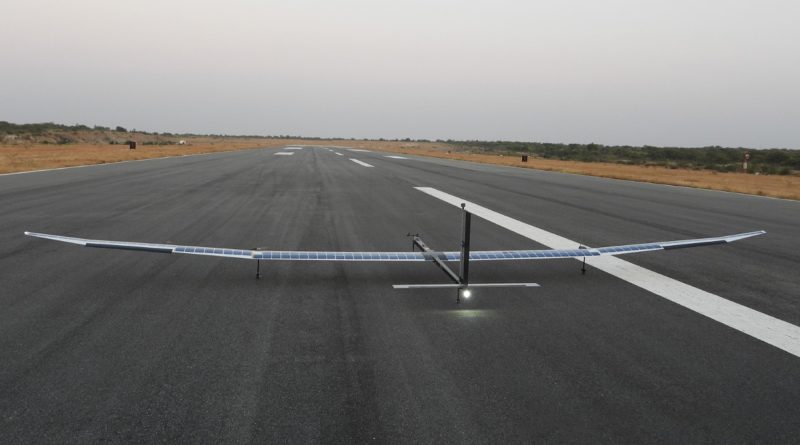India’s Pseudo-Satellite: Solar Plane That Can Fly For 90 Days At A Time
In what will be a significant addition to India’s arsenal, scientists have been developing a solar-powered plane that can fly up to 90 days at a stretch, and a smaller version has been flown successfully for ten hours.
Called a High-Altitude Platform (HAP), it has been developed by the National Aerospace Laboratories (NAL), Bengaluru. HAP is a solar-powered autonomous unmanned aircraft flying at stratospheric levels and is capable of day-and-night operations at altitudes of 17-20 km with an endurance of months. A HAP with a payload is often referred to as a High-Altitude Pseudo Satellite (HAPS).
A startup in Bengaluru called New Space Research and Technologies has also developed a similar prototype with 24-hour endurance.
According to NAL, during times of conflict, HAPS can address the perpetual theatre and strategic air asset shortfall, particularly during force mobilisation. It can fill both strategic and tactical roles of ISR (Intelligence, Surveillance, Reconnaissance) and can also provide battlefield communications. When used by air defence services, such aircraft can play an additional role in directing operations.
Reports suggest that, as of now, the only functional HAPS in the world is the Airbus Zephyr, which has demonstrated a 64-day continuous flight in the Arizona desert in the US. Several efforts are on worldwide to develop such platforms, including in the US, United Kingdom, Germany and New Zealand. This makes it a very topical problem for testing the capabilities of the Council of Scientific and Industrial Research-National Aerospace Laboratories (CSIR-NAL).
CSIR-NAL carried out a series of flight trials on the solar-secondary battery subscale High Altitude Platform vehicle earlier this year, at the Defence Research and Development Organisation’s aeronautical test range (ATR) at Challakere, Karnataka. The aircraft was equipped with all payloads and flight systems, though in a reduced size, as would be needed on the full-scale version.
The aircraft, which has a wingspan of nearly 12 metres (nearly 40 feet), weighs less than 22 kg when fully equipped.
Eye In The Sky
Dr L Venkatakrishnan, Head, HAPS Program, National Aerospace Laboratories, told NDTV, “It is a potent solar-powered eye in the sky, much cheaper and more versatile than a satellite, easy to deploy and keep in the air for weeks together.”
Dr Venkatakrishnan added, “The aircraft met or exceeded all the performance metrics set out for it including a flight endurance of more than 8.5 hours, reaching an altitude of almost 3 km above mean sea level. With a high-performance solar PV (photovoltaic cell) and battery system, the subscale can reach a 24-hour endurance, with a payload of about 1kg, making it useful for several low-altitude activities.”
The NAL requirement for a full-scale HAPS includes an assisted launch from the southern tip of India, with the aircraft climbing to above the sub-tropical jet stream (from 5 km to 15 km), which exists over the northern part of the country, before reaching a 20-degree latitude. Other requirements include a service ceiling of 23 km and a payload carrying capacity of 15 kg. The aircraft should also be able to take off from a field with a length of 150-200 metres.
While endurance will be dependent on factors including atmospheric conditions and equipment performance, NAL is aiming to achieve 90 days of HAPS operations. Dr Venkatakrishnan says the final version will have a wingspan which will be as wide as an Airbus 320, but weigh only as much as a regular motorcycle.
The biggest advantage of HAPS is that it can be used to continuously monitor enemy territory – day or night – once it is equipped with the right sensors, making it a unique bird in the sky that can keep an eye on some of India’s neighbours.
Disclaimer: (Only the headline and picture of this report may have been reworked by the KanoonKiBaat staff; the rest of the content is auto-generated from a syndicated feed.)
Source Link





